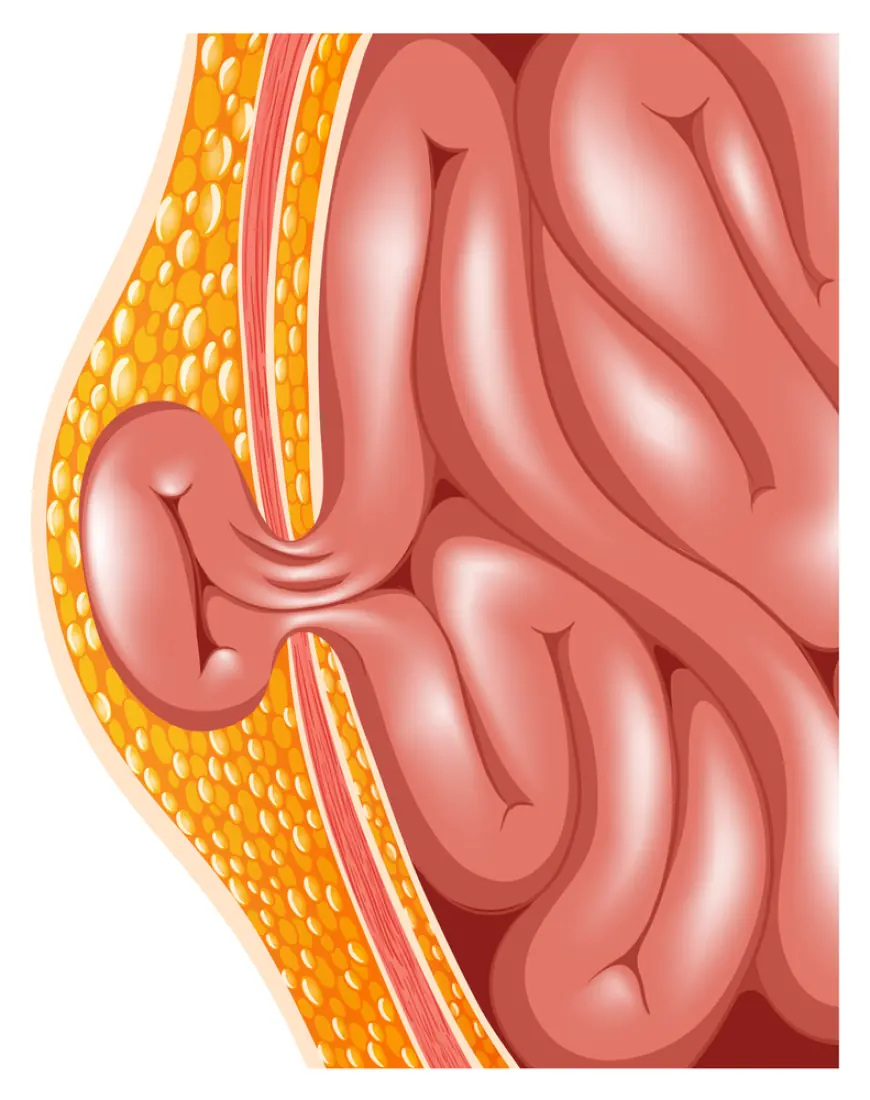Hernia Types Explained: Inguinal, Umbilical, and More
Hernias are a common medical condition that can affect people of all ages and genders. They occur when an internal organ or tissue pushes through a weak spot in the surrounding muscle or connective tissue.

Hernias are a common medical condition that can affect people of all ages and genders. They occur when an internal organ or tissue pushes through a weak spot in the surrounding muscle or connective tissue. While hernias can appear in various parts of the body, some types are more common than others. In this article, we’ll explore the different types of hernias, their symptoms, and treatment options to help you understand this condition better.
What Is a Hernia?
A hernia typically appears as a bulge or lump in the affected area. It may be accompanied by pain or discomfort, especially during activities like lifting, coughing, or bending over. Hernias occur due to weakened muscles or increased pressure in the abdominal cavity. Common risk factors include:
- Heavy lifting
- Chronic coughing
- Obesity
- Pregnancy
- Constipation
- Previous surgeries
- Genetic predisposition
Types of Hernias
1. Inguinal Hernia
The most common type of hernia, an inguinal hernia, occurs when tissue (often part of the intestine) protrudes through a weak spot in the lower abdominal wall near the inguinal canal.
- Who is affected? More common in men.
- Symptoms: Bulge in the groin, pain or discomfort when coughing, bending, or lifting.
2. Umbilical Hernia
This type occurs near the belly button (umbilicus) when the abdominal lining or part of the intestine protrudes through the abdominal wall.
- Who is affected? Common in infants, but adults can develop it too, particularly women during or after pregnancy.
- Symptoms: Swelling or a bulge near the navel, especially noticeable when crying or straining in infants.
3. Hiatal Hernia
A hiatal hernia occurs when part of the stomach pushes through the diaphragm into the chest cavity.
- Who is affected? Adults over 50 and people with obesity.
- Symptoms: Heartburn, acid reflux, chest pain, and difficulty swallowing.
4. Femoral Hernia
Femoral hernias occur when tissue pushes through the femoral canal, located near the upper thigh.
- Who is affected? More common in women, particularly those who are pregnant or obese.
- Symptoms: Lump near the groin or upper thigh, which can become painful or tender.
5. Incisional Hernia
This type occurs at the site of a previous surgical incision when the abdominal muscles do not heal properly.
- Who is affected? Patients who have undergone abdominal surgery.
- Symptoms: Bulge near the surgical scar, which can increase in size over time.
6. Epigastric Hernia
This type occurs in the upper abdominal region, between the navel and the lower part of the ribcage, when fatty tissue pushes through a weak spot.
- Who is affected? Both men and women.
- Symptoms: Small lump in the upper abdomen, often painless but may cause discomfort.
Diagnosis and Treatment
Diagnosis
Doctors usually diagnose hernias through:
- Physical examination: Identifying visible or palpable bulges.
- Imaging tests: Ultrasounds, CT scans, or MRIs to confirm the diagnosis and assess severity.
Treatment Options
- Watchful Waiting: For small, asymptomatic hernias, your doctor may recommend monitoring.
- Hernia Truss or Support Belts: Temporary relief for minor hernias.
- Surgical Repair:
- Open Surgery: Traditional method involving an incision to push the hernia back in place.
- Laparoscopic Surgery: Minimally invasive procedure using small incisions and a camera.
FAQs About Hernias
1. Can a hernia heal on its own?
No, hernias do not heal by themselves. Surgery is often needed to repair them, especially if they cause pain or complications.
2. Are hernias life-threatening?
While most hernias are not life-threatening, complications like strangulation (cut-off blood supply to the herniated tissue) can be serious and require emergency surgery.
3. How can I prevent a hernia?
You can reduce your risk by:
- Avoiding heavy lifting or using proper lifting techniques.
- Maintaining a healthy weight.
- Strengthening your core muscles with regular exercise.
- Treating chronic cough or constipation.
4. Can women develop inguinal hernias?
Yes, although less common, women can develop inguinal hernias. Femoral hernias, however, are more prevalent in women.
5. Is hernia surgery risky?
Hernia surgery is generally safe, with most patients recovering fully. Risks are minimal when performed by experienced surgeons.
Conclusion
Hernias are a manageable condition when diagnosed and treated promptly. Recognizing the symptoms and understanding the types can help you seek the right care. If you notice any unusual bulges or experience discomfort, consult a best hernia specialist near me. With modern surgical techniques, hernia repair is effective, and recovery is quicker than ever.
Dr. Kapil Agrawal is the best hernia specialist in Delhi and is affiliated with some of the best hospitals for hernia treatment in Delhi, India.
Stay informed and prioritize your health to avoid complications associated with hernias.












